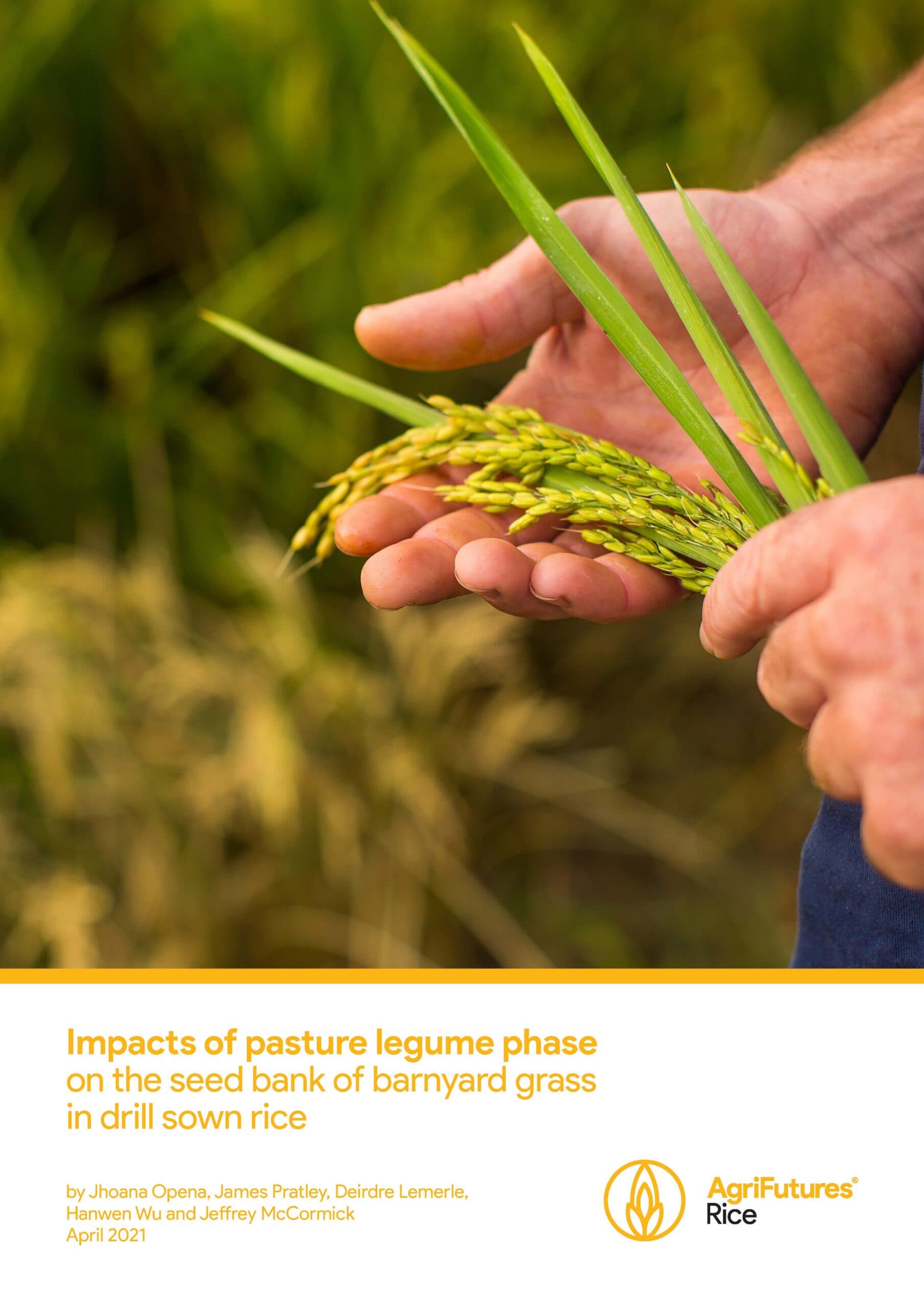Rice Breeding Australia Annual Results: September 2023 to August 2024
As part of this project, Rice Breeding Australia Ltd. (RBA) has rapidly evolved the previous rice breeding program despite significant challenges in its first year...
 RICE
RICE 
62 pages
Published: 2 Nov 2021
Author(s): Jhoana Opena, James Pratley, Deirdre Lemerle, Hanwen Wu, Jeffrey McCormick
ISBN: 978-1-76053-185-0
Download report PDF
DownloadPurchase a hard copy - AUD $50
Australian rice growers endeavour to increase water productivity by adopting water-saving systems, such as direct drill sowing of rice (DSR) in dry soil and delaying the application of permanent water (DPW) until late tillering. These water-saving methods, however, provide an opportunity for barnyard grass (Echinochloa spp.) to proliferate.
Barnyard grass is an annual summer grass weed that has been reported across 61 countries and grows as a weed in 36 crops. In Australia, a 5 t ha-1 rice yield loss due to competition from barnyard grass has been reported, while it has also caused rice seed contamination during harvest and removed up to 80% of soil mineral nitrogen. Barnyard grass was also reported to have evolved herbicide resistance to nine herbicide modes of action in 20 countries, and in four crops, including rice. Growers can spend from $400-870 ha-1 for herbicide control in DSR. In order to sustain water productivity gains with these water-saving strategies in rice production, it is imperative that this weed is managed effectively.
This research aimed to provide rice growers with an alternative option to manage barnyard grass in drill sown rice to ensure productivity is not compromised using these water-saving strategies. The objectives of the research in the context of the Australian DSR system were to determine: the impact of pasture legume residues on the emergence and growth of barnyard grass; the influence of pasture legumes on the seed bank dynamics of barnyard grass; and the effects of environmental factors on the germination/emergence and early growth of barnyard grass.
The report recommends that more than two years of pasture legume rotation be employed against barnyard grass, and that this strategy be combined with other weed management tools, such as no-till, drill sowing implements with discs, delayed rice sowing, the stale seedbed technique, and the use of competitive rice cultivars with early vigour.